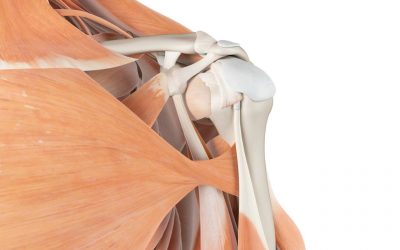Range of motion exercises are exercises that help improve the range of motion of a joint. Range of motion exercises are important for people who have reduced range of motion, which may be caused by acute injury, repetitive strain injuries, joint degeneration, or chronic lack of movement.
How often you should do range of motion exercises depends on individual factors such as the severity of your condition, your age, and your overall health.
If you have a mild condition, you may only need to do range of motion exercises a few times a week.
If you have a more severe condition, you may need to do them every day. The type of range of motion exercises will change as you recover from an injury and the nature of your condition changes.
What are range of motion exercises?
A ROM exercise is an activity aimed at improving or maintaining the ROM of a particular joint. There are 3 different types of ROM exercises: Passive Range of Motion Exercises, Active-Assisted Range of Motion Exercises, and Active Range of Motion Exercises
Passive ROM Exercises
In Passive ROM exercises the movement of the joint is completely passive. It is not accompanied by an active muscular contraction by the person performing the exercise. A physical therapist or a ROM machine applies pressure to move the joint.
Active Assisted ROM Exercise
Active-assisted ROM exercises- this type of exercise requires an active muscular contraction by the person performing the exercise to move the joint. However, it is assisted by an external force (therapist or a piece of equipment such as a wand or the other arm).
Active ROM Exercises
Active ROM exercises- In this type of exercise the joint movement is done purely by the person performing the exercise. No additional external force is given to perform the ROM
Depending upon the patient/person to whom these exercises are prescribed for, the type of ROM exercise varies. There are no strict contraindications for doing shoulder ROM exercises unless you have a fracture, a dislocated shoulder, a dislocated acromioclavicular joint, or acute and severe soft tissue trauma.
How often should you do range of motion exercises?
The American College of Sports Medicine (ACSM) has set some guidelines when it comes to physical exercises.
Frequency
According to the ACSM guidelines, flexibility exercises should be done at a frequency of at least 2-3 times a week to improve ROM.
However, that being said, the prescription of ROM exercises is multifactorial. For eg, if ROM exercises have been prescribed after a traumatic fracture or soft tissue injury, the protocol prescribed must be strictly followed. Expecting quicker and better results by overdoing these exercises in this scenario would be counterproductive and harmful.
On the other hand, if a completely healthy individual wishes to do ROM exercises for the shoulder, he/she may do them every day. The ACSM guidelines for frequency can be increased as they only give an idea about what is the minimum and not the maximum.
Intensity and Duration
Usually, stretching exercises are prescribed to increase the ROM of the shoulder jointThe glenohumeral joint is a ball-and-socket synovial joint and is the most mobile joint in the human More. It is important to remember that each stretch must be held for a minimum of 30 seconds. The targeted soft tissues may not undergo any real stress and may not actually stretch enough if held for a lesser amount of time. (cite kisner) Another important factor to remember is to stretch up to a point of tightness or slight discomfort. Overstretching could cause an injury and thus should be avoided. Each stretch should be repeated at least 3-5 times.
Measuring Range of Motion
In the field of medicine, measuring range of motion (ROM) is a fundamental evaluation technique. The most acceptable medical definition of ROM is, “the extent of osteokinematic motion available for movement activities, functional or otherwise, with or without assistance.” (Osteo= bone, kinematic= motion/movement).
ROM of a joint has frequently been used to identify baseline motion restrictions, evaluate musculoskeletal system impairments, direct the selection of the most effective treatment approaches, and document the outcomes of these interventions.
Restriction in the ROM of a joint can hamper the level of function of that joint. For a joint like the shoulder joint, it can subsequently restrict the function of the entire limb. This, in turn, can cause restrictions in activities of daily living and can make menial tasks complex and unachievable. Measurement of the ROM of a joint is done using a device called a goniometer.

